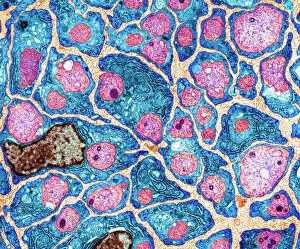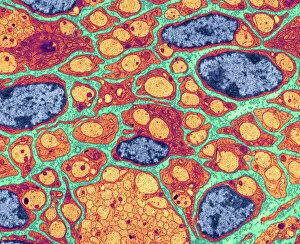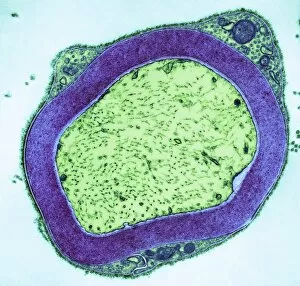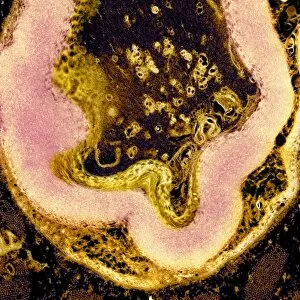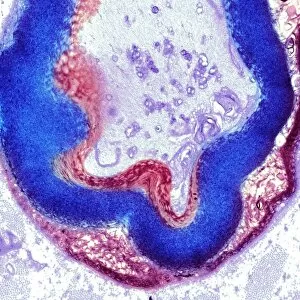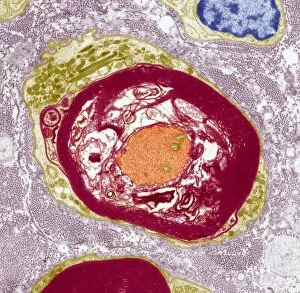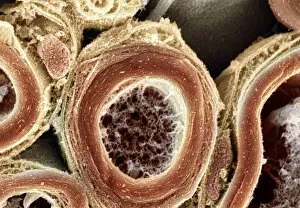Neurolemma Collection
Neurolemma, a crucial component of nerve fibers, plays a vital role in the myelination process
For sale as Licensed Images
Choose your image, Select your licence and Download the media
Neurolemma, a crucial component of nerve fibers, plays a vital role in the myelination process. Through transmission electron microscopy (TEM), scientists have been able to unravel the intricate details of myelinated nerves. The images captured through TEM reveal the mesmerizing beauty and complexity of these specialized cells. In one captivating image, we witness the myelination process in action. Nerve fibers are adorned with multiple layers of protective sheaths, forming a unique pattern that enhances their functionality. These layers not only provide insulation but also facilitate faster signal transmission along the nerve pathways. The TEM images showcase various stages of myelination, each more awe-inspiring than the last. From C016 / 5840 to C016 / 5370, we observe how these myelinated nerves undergo transformation and maturation. The intricate network formed by these fibers is truly remarkable. Furthermore, scanning electron microscopy (SEM) has allowed researchers to explore myelinated nerves from a different perspective. SEM images such as C013 / 7142 and C013 / 7141 offer an up-close view of this complex system. The detailed structures visible in these images highlight the precision with which nature has designed our neural networks. Studying neurolemma and its role in myelin formation provides valuable insights into neurological disorders like multiple sclerosis where demyelination occurs. By understanding how healthy nerve fibers function and maintain their integrity through proper myelin coverage, scientists can develop innovative therapies for those affected by such conditions. The world beneath our skin is filled with wonders waiting to be discovered; neurolemma's contribution to our nervous system is undoubtedly one of them. As research continues to unravel its mysteries using advanced imaging techniques like TEM and SEM, we inch closer towards unlocking new frontiers in neuroscience that could potentially revolutionize medical treatments for countless individuals worldwide.

